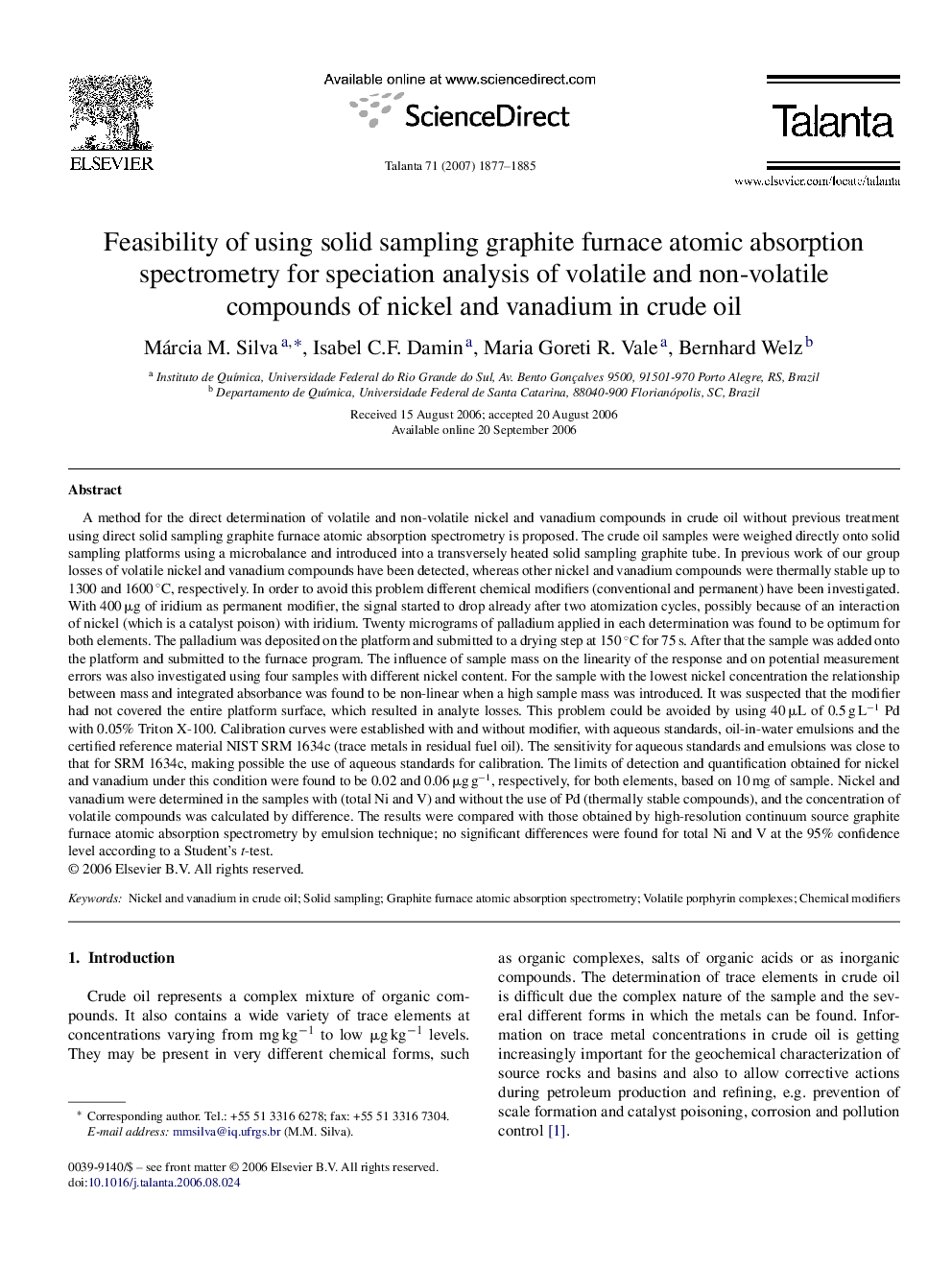| کد مقاله | کد نشریه | سال انتشار | مقاله انگلیسی | نسخه تمام متن |
|---|---|---|---|---|
| 1245900 | 969740 | 2007 | 9 صفحه PDF | دانلود رایگان |

A method for the direct determination of volatile and non-volatile nickel and vanadium compounds in crude oil without previous treatment using direct solid sampling graphite furnace atomic absorption spectrometry is proposed. The crude oil samples were weighed directly onto solid sampling platforms using a microbalance and introduced into a transversely heated solid sampling graphite tube. In previous work of our group losses of volatile nickel and vanadium compounds have been detected, whereas other nickel and vanadium compounds were thermally stable up to 1300 and 1600 °C, respectively. In order to avoid this problem different chemical modifiers (conventional and permanent) have been investigated. With 400 μg of iridium as permanent modifier, the signal started to drop already after two atomization cycles, possibly because of an interaction of nickel (which is a catalyst poison) with iridium. Twenty micrograms of palladium applied in each determination was found to be optimum for both elements. The palladium was deposited on the platform and submitted to a drying step at 150 °C for 75 s. After that the sample was added onto the platform and submitted to the furnace program. The influence of sample mass on the linearity of the response and on potential measurement errors was also investigated using four samples with different nickel content. For the sample with the lowest nickel concentration the relationship between mass and integrated absorbance was found to be non-linear when a high sample mass was introduced. It was suspected that the modifier had not covered the entire platform surface, which resulted in analyte losses. This problem could be avoided by using 40 μL of 0.5 g L−1 Pd with 0.05% Triton X-100. Calibration curves were established with and without modifier, with aqueous standards, oil-in-water emulsions and the certified reference material NIST SRM 1634c (trace metals in residual fuel oil). The sensitivity for aqueous standards and emulsions was close to that for SRM 1634c, making possible the use of aqueous standards for calibration. The limits of detection and quantification obtained for nickel and vanadium under this condition were found to be 0.02 and 0.06 μg g−1, respectively, for both elements, based on 10 mg of sample. Nickel and vanadium were determined in the samples with (total Ni and V) and without the use of Pd (thermally stable compounds), and the concentration of volatile compounds was calculated by difference. The results were compared with those obtained by high-resolution continuum source graphite furnace atomic absorption spectrometry by emulsion technique; no significant differences were found for total Ni and V at the 95% confidence level according to a Student's t-test.
Journal: Talanta - Volume 71, Issue 5, 30 March 2007, Pages 1877–1885